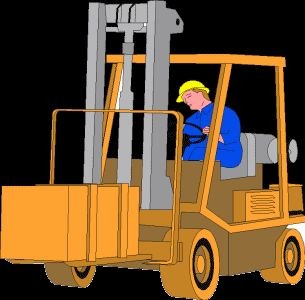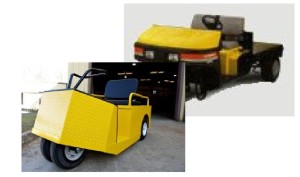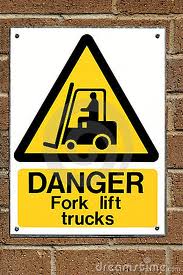In the materials/handling industry the big push has been to become lean and more efficient. The faster goods and services can be moved in and out of either the warehouse or manufacturing facility and the more flexibility offered the customer the better.
Is it really efficient to use a lifting device to transport goods horizontally? Also, the more the industry moves away from standard pack and into piece pack (where individual items rather than whole cases/pallets of items are moved) then equipment that is more nimble, multi-purpose and designed to transport mixed loads quickly becomes the “Lean” choice.
As speed and flexibility are the new object of the game, it’s easy to see why many warehouses/manufacturers are moving to using stock chasers, tuggers, & carts. They are your new nimble player who can dodge the obstacles and make the end run in record time.
Look at these 5 advantages:
1) This type of equipment is designed to move goods horizontally quickly and efficiently. Why use a bulkier unit that is good for lifting to just transport items down an isle?
2) You can move large quantities of items by creating a train of goods. Why run back and forth to the loading dock with single loads?
3) You can stage orders when picking so that multiple complete orders can be delivered to the dock ready for shipping out. This reduces overall travel time too.
4) Isle width can often be reduced as many of the stock chasers, tuggers etc are narrower and have a tighter turning radii. This decreases the overall footprint of your warehouse/manufacturing facility saving you significant dollars/month.
5) For some of the tasks, carts can be pushed around eliminating the need to wait for a lift truck or to have a “licensed” fork lift driver which increases flexibility in staffing.
Using less warehouse space, getting delivered items unpacked quicker (which translates into getting paid quicker), reducing travel time to facilitate faster order turnaround and reducing staff requirements translates into increased speed and flexibility and big savings that cannot be ignored. When you consider that many forklifts cost around $30,000 while a very good, flexible stock chaser will cost around $12,000 the case for switching becomes even more compelling.
Some warehouses/manufacturing facilities are beginning to consider eliminating forklifts all together – especially when approx. 97,000 injuries in the industry are directly related to forklifts. (See: http://bxboy52.wordpress.com/2013/02/15/the-secret-killer-in-your-warehouse/ )
While eliminating forklifts may not be totally feasible or even sensible, as there still will be a need for the forklift lifting and moving capabilities both at the loading dock, where large pallets (whether piece or standard pack) need to be unloaded and anywhere you have tall shelves where product needs to be lifted to the top. It does mean, however, that most warehouses/manufacturing spaces will be adopting stock chasers, carts & tuggers to speed up the delivery and distribution of goods and materials.
 Looks like the winner of this round is the stock chaser, tugger or cart. Have you seen this trend in warehousing and manufacturing facilities in your industry? *
Looks like the winner of this round is the stock chaser, tugger or cart. Have you seen this trend in warehousing and manufacturing facilities in your industry? *
Next: Just In Panic – Will Lean Help You Survive?



